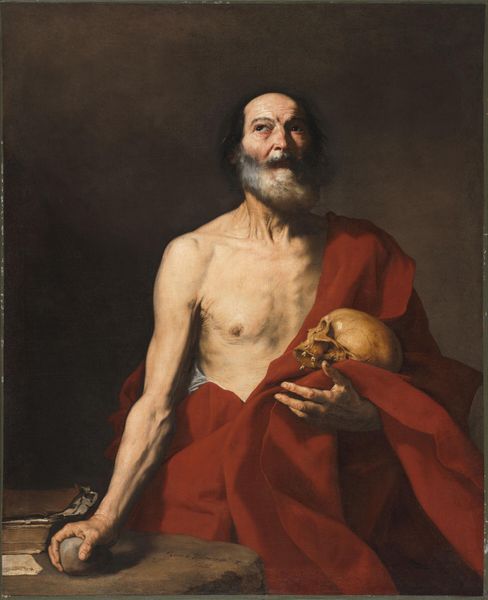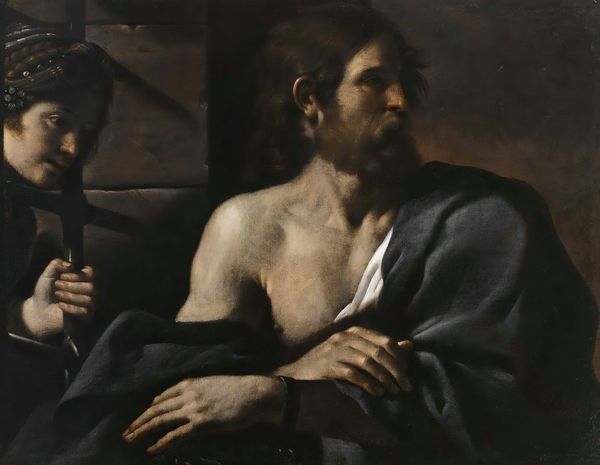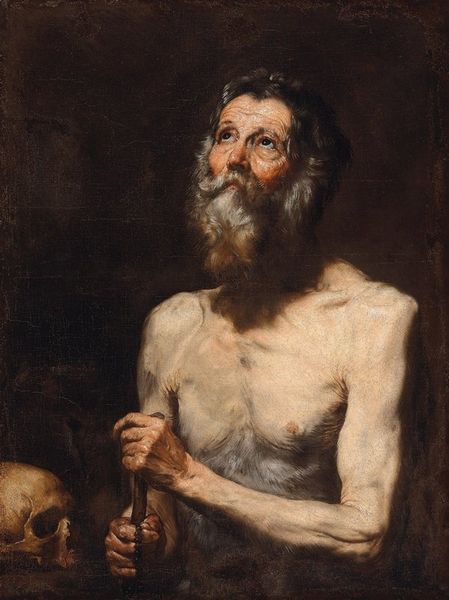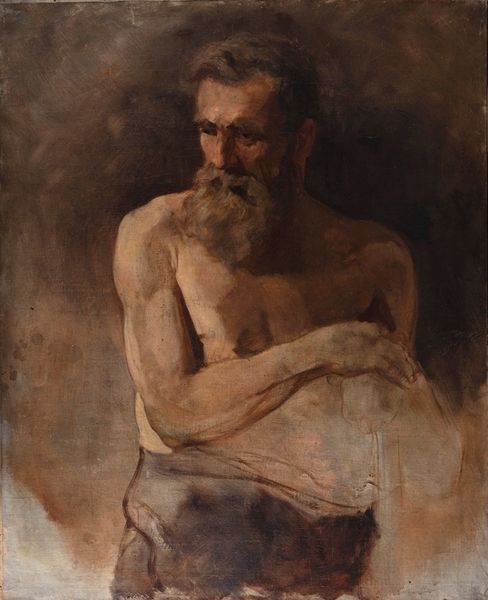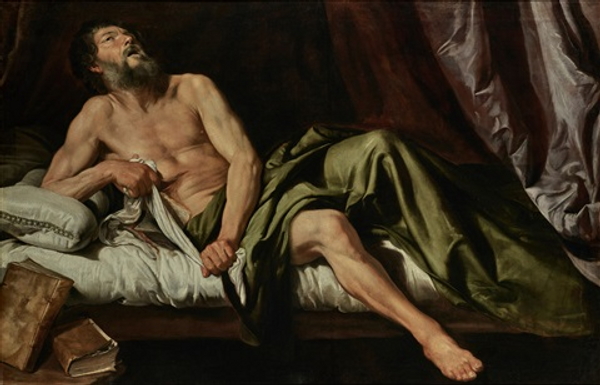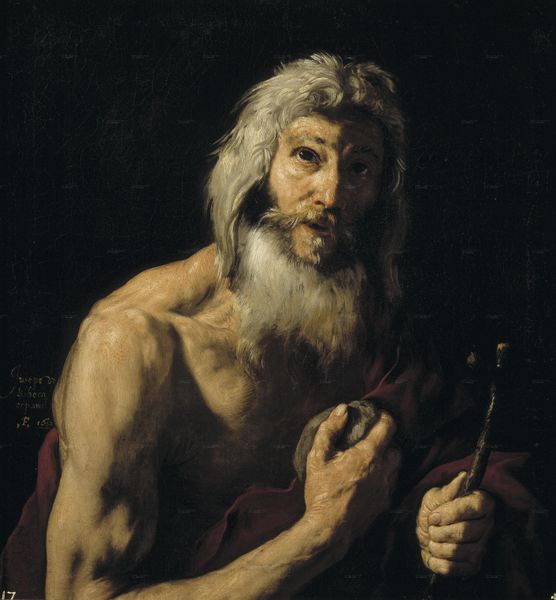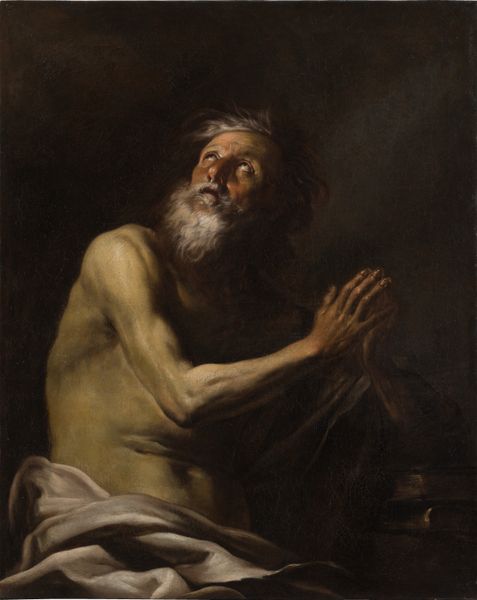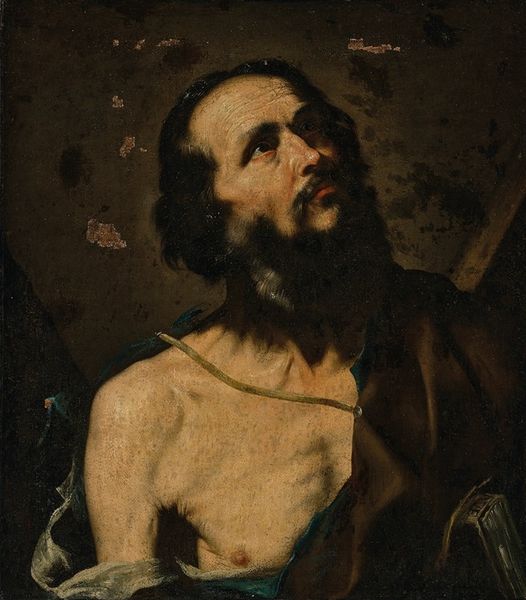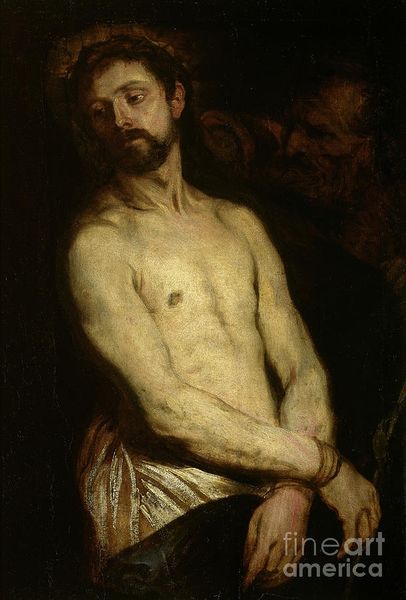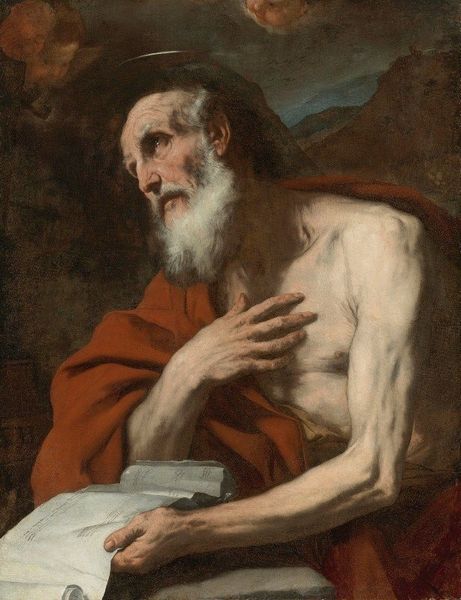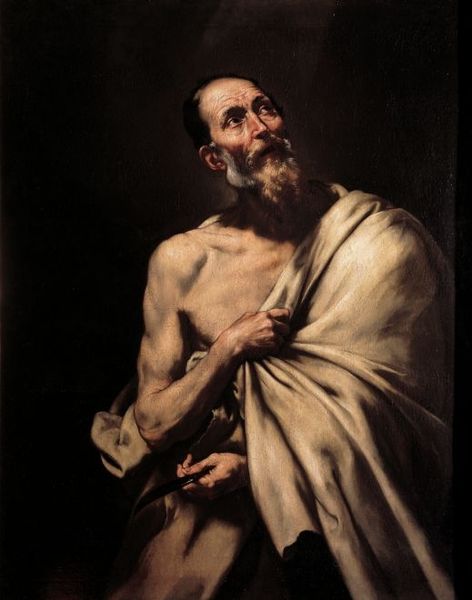
oil-paint
portrait
baroque
oil-paint
oil painting
vanitas
chiaroscuro
history-painting
Dimensions: 109 x 90 cm
Copyright: Public domain
Art Historian: Here we see Jusepe de Ribera's "St. Jerome," an oil painting created in 1644, now residing in the Museo del Prado. Curator: My first impression is one of stark contemplation. The harsh light raking across Jerome’s gaunt frame emphasizes the weight of thought and mortality—the somber tone really grabs you. Art Historian: Ribera was a master of tenebrism, that dramatic contrast between light and shadow so popular during the Baroque era. This style isn’t merely aesthetic. It directs our gaze, highlights certain elements, and really drives the narrative. Jerome’s intellectual contributions as the translator of the Bible and his ascetic life are core to understanding this painting's history. Curator: Precisely. He’s depicted not in triumphant glory, but in the quiet throes of aging. And the presence of the skull… it’s such an overt vanitas symbol, bluntly reminding us of the transient nature of life, no matter how devout you are. The historical positioning is perfect for understanding how power, mortality, and devotion interplayed at the time. Art Historian: Ribera’s choice to depict him this way aligns with broader themes within Counter-Reformation art. This wasn't about portraying saints as distant, celestial beings. Instead, he’s grounding them in human reality to inspire piety through identification. Also, let’s consider the politics. Spain was using such paintings as a part of the broader Catholic campaign. Curator: And I’d add that considering the social undercurrents provides deeper layers of understanding: religious authority imposing moral codes against individual bodies; questioning societal anxieties and their complex intersections through the themes portrayed. Where did power truly lie? Art Historian: Good point. Furthermore, consider Ribera's origins. He was working primarily in Spanish-controlled Naples. Examining the cross-cultural exchanges within art production brings in complex and powerful dimensions. Curator: It's interesting how that impacts what is shown: Ribera’s style, informed by diverse sources, brings a unique texture to this very popular subject, enriching our understanding of this era and opening complex intersections on philosophical contemplation with stark political and social conditions of seventeenth century Europe. Art Historian: This artwork provides a great insight into the artist, society and also its history. A worthwhile moment of contemplation. Curator: Definitely. The raw honesty of mortality captured here truly allows a deep discussion on the very fabric of life itself, reminding us that social critique, and introspective analyses have historical contexts which reflect contemporary settings.
Comments
No comments
Be the first to comment and join the conversation on the ultimate creative platform.
